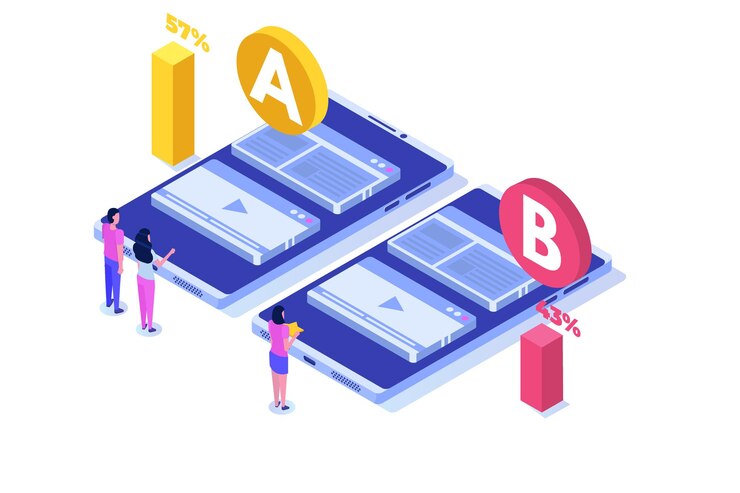In the world of digital marketing, A/B testing is a powerful tool that can supercharge your campaigns. This article delves into A/B testing, its significance, and how to optimize campaigns for maximum return on investment (ROI).
A/B testing, also known as split testing, is a method that compares two versions of a webpage or marketing material to determine which one performs better.
The Significance of A/B Testing
A/B testing is essential because it provides data-driven insights into what works best for your audience, helping you make informed decisions and maximize ROI.
Setting Up A/B Tests
Learn how to set up A/B tests effectively, including defining clear goals and objectives.
Identifying Key Metrics
Discover the crucial metrics that you should be tracking during your A/B tests, such as conversion rates, click-through rates, and bounce rates.
Crafting Variations
Understand the art of creating meaningful variations that you want to test, from headlines and images to call-to-action buttons.
Running A/B Tests
This section covers the actual execution of A/B tests, including the importance of randomizing and segmenting your audience.
Analyzing Results
Learn how to interpret the data gathered from A/B tests and draw actionable insights.
Optimizing for Maximum ROI
Optimization is the heart of A/B testing. Find out how to use your results to fine-tune your campaigns for maximum ROI.
The Role of Personalization
Discover how personalization can enhance A/B testing and boost the effectiveness of your campaigns.
Leveraging Automation
Automation tools can streamline the A/B testing process, making it more efficient and accurate.
Multivariate Testing
Explore the concept of multivariate testing, where multiple elements are tested simultaneously for deeper insights.
Real-Life A/B Testing Examples
Get inspired by real-life examples of A/B testing success stories from different industries.
Common A/B Testing Mistakes
Avoid the common pitfalls and mistakes that marketers often make during A/B testing.
Conclusion: A/B Testing for Success
A/B testing is a game-changer in the marketing world. By understanding the significance of A/B testing, setting up tests correctly, analyzing results, and optimizing for maximum ROI, businesses can achieve remarkable success in their digital campaigns.
FAQs
1. What is the main purpose of A/B testing in marketing?
The main purpose of A/B testing is to compare two or more versions of a webpage or marketing material to determine which one performs better in terms of user engagement, conversions, and other relevant metrics.
2. How can A/B testing help optimize campaigns for maximum ROI?
A/B testing provides data-driven insights into what works best for your audience, allowing you to fine-tune your campaigns for maximum return on investment by making informed decisions.
3. What are some common A/B testing mistakes to avoid?
Common A/B testing mistakes include not setting clear goals, failing to randomize and segment the audience, drawing conclusions too quickly, and not running tests for a sufficient duration.
4. Can A/B testing be applied to email marketing campaigns?
Yes, A/B testing can be applied to email marketing campaigns to test various elements such as subject lines, content, images, and call-to-action buttons for improved email performance.
5. How can personalization enhance A/B testing results?
Personalization tailors content to individual users, making A/B testing more effective by ensuring that variations are relevant to each user, thus increasing the chances of higher engagement and conversions.



